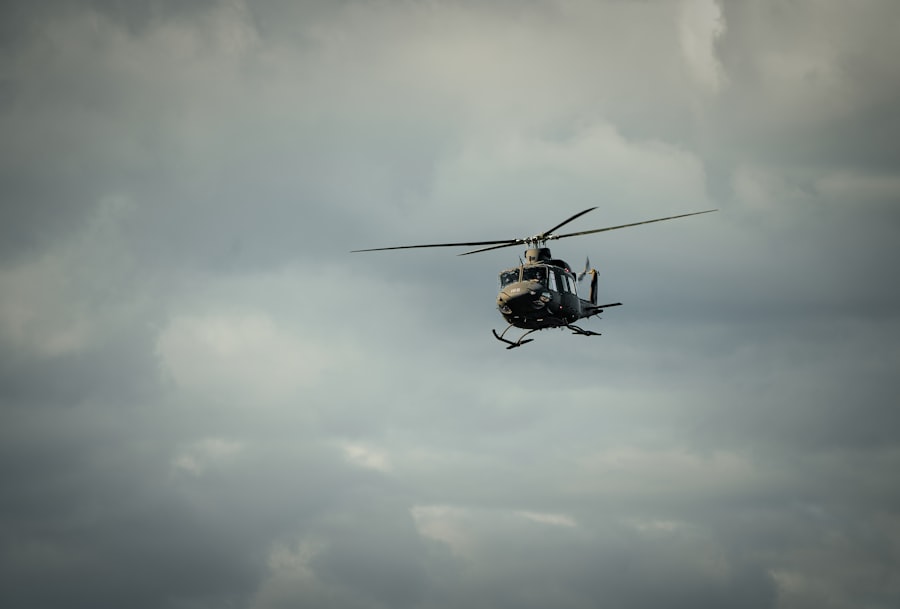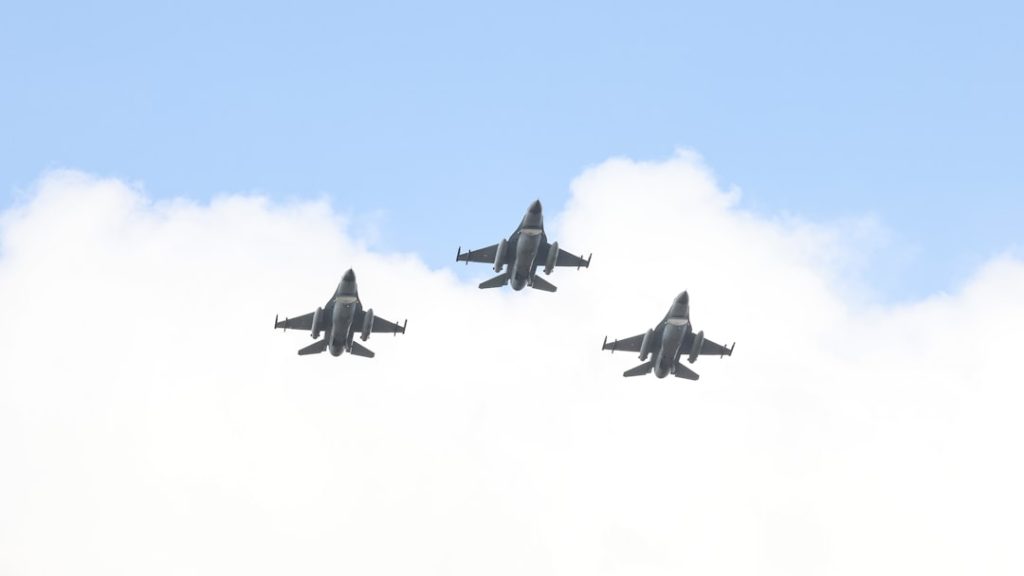The defense industry is a complex and multifaceted sector that plays a crucial role in national security and global stability. It encompasses a wide range of activities, including the design, development, production, and maintenance of military equipment, weapons systems, and technology. This industry is not only vital for the armed forces of various nations but also significantly influences international relations, economic policies, and technological advancements.
The defense sector operates under a unique set of regulations and standards, often driven by government contracts and international treaties, which shape its operations and strategic direction. At its core, the defense industry is about safeguarding nations and their interests. It involves a diverse array of products and services, from advanced fighter jets and naval vessels to cybersecurity solutions and intelligence systems.
The industry’s significance extends beyond mere military applications; it also encompasses research and development initiatives that can lead to innovations with civilian applications. As geopolitical tensions rise and new threats emerge, the defense industry continues to evolve, adapting to the changing landscape of warfare and security needs.
Key Takeaways
- The defense industry is a crucial sector that focuses on the development, production, and maintenance of military equipment and technology.
- The defense industry has a long history, evolving from traditional weapons and armor to advanced technology and cyber warfare.
- Key players in the defense industry include companies like Lockheed Martin, Boeing, and BAE Systems, which dominate the market with their advanced capabilities and global reach.
- Global defense spending continues to rise, driven by geopolitical tensions and the need for modernization, while market trends show a shift towards unmanned systems and cybersecurity.
- Technological advancements in the defense industry include AI, drones, and advanced communication systems, which are shaping the future of warfare and defense strategies.
History and Evolution of the Defense Industry
The roots of the defense industry can be traced back to ancient civilizations, where the need for protection against external threats led to the development of rudimentary weapons and fortifications. However, the modern defense industry began to take shape during the Industrial Revolution in the 19th century. This period marked a significant transformation in military technology, with innovations such as rifled firearms, steam-powered ships, and railroads revolutionizing warfare.
The establishment of factories dedicated to producing military goods laid the groundwork for what would become a robust defense sector. The two World Wars were pivotal moments in the evolution of the defense industry. During World War I, mass production techniques were applied to military equipment, leading to unprecedented levels of output.
The interwar period saw significant advancements in aviation and armored vehicles, setting the stage for World War
The conflict itself catalyzed technological breakthroughs, including radar, jet propulsion, and nuclear weapons. Post-war, many countries recognized the importance of maintaining a strong defense capability, leading to increased government investment in military research and development. The Cold War further accelerated this trend, as nations engaged in an arms race that spurred innovation in missile technology, surveillance systems, and electronic warfare.

Key Players and Major Companies in the Defense Industry
| Company Name | Country | Revenue (in billions) | Number of Employees |
|---|---|---|---|
| Lockheed Martin | United States | 59.81 | 110,000 |
| Boeing | United States | 58.16 | 153,000 |
| Northrop Grumman | United States | 33.84 | 90,000 |
| Raytheon Technologies | United States | 32.38 | 195,000 |
| BAE Systems | United Kingdom | 25.85 | 88,200 |
The defense industry is characterized by a mix of large multinational corporations and smaller specialized firms. Major players include companies like Lockheed Martin, Boeing, Northrop Grumman, Raytheon Technologies, and BAE Systems. These corporations dominate the market due to their extensive portfolios that encompass everything from aircraft and naval vessels to missile systems and cybersecurity solutions.
Lockheed Martin’s F-35 Lightning II program exemplifies how large defense contractors can shape military capabilities on a global scale, with numerous countries participating in its development and procurement. In addition to these giants, there are numerous smaller firms that contribute specialized technologies or services. Companies like Palantir Technologies focus on data analytics and intelligence solutions, while others may specialize in niche areas such as drone technology or advanced materials for military applications.
The interplay between large contractors and smaller innovators fosters a dynamic ecosystem where cutting-edge technologies can emerge. Furthermore, many countries have established state-owned enterprises that play a significant role in their national defense strategies, such as Russia’s Almaz-Antey or China’s Aviation Industry Corporation.
Global Defense Spending and Market Trends
Global defense spending has seen significant fluctuations over the decades, influenced by geopolitical events, economic conditions, and technological advancements. According to the Stockholm International Peace Research Institute (SIPRI), global military expenditure reached approximately $2 trillion in 2021, marking a steady increase from previous years. This trend reflects heightened security concerns stemming from regional conflicts, terrorism, cyber threats, and great power competition among nations like the United States, China, and Russia.
Market trends indicate a shift towards modernization and technological integration within armed forces worldwide. Countries are increasingly investing in advanced capabilities such as unmanned systems, artificial intelligence (AI), and cyber warfare capabilities. For instance, NATO member states have committed to increasing their defense budgets in response to perceived threats from Russia.
Additionally, there is a growing emphasis on joint operations and interoperability among allied forces, leading to collaborative programs that enhance collective security. The rise of asymmetric warfare has also prompted nations to allocate resources towards counterinsurgency operations and homeland security measures.
Technological Advancements in the Defense Industry

Technological advancements are at the forefront of the defense industry’s evolution. Innovations such as artificial intelligence (AI), machine learning, autonomous systems, and advanced materials are reshaping how militaries operate. AI is being integrated into various applications ranging from predictive maintenance for military equipment to enhancing decision-making processes in combat scenarios.
For example, AI algorithms can analyze vast amounts of data from surveillance systems to identify potential threats more efficiently than human operators. Unmanned aerial vehicles (UAVs), commonly known as drones, have revolutionized modern warfare by providing real-time intelligence and precision strike capabilities without risking human lives. The use of drones in conflict zones has expanded significantly over the past decade, with countries like the United States employing them for targeted strikes against terrorist organizations.
Additionally, advancements in cyber capabilities have become critical as nations recognize the importance of protecting their digital infrastructure from cyberattacks that could disrupt military operations or compromise sensitive information.
Ethical and Moral Considerations in the Defense Industry
The defense industry is often at the center of ethical debates regarding its role in society and its impact on global peace. The production and sale of weapons raise significant moral questions about accountability and responsibility. Critics argue that arms manufacturers contribute to conflicts around the world by supplying weapons to regimes with questionable human rights records or engaging in arms races that escalate tensions between nations.
The proliferation of advanced weaponry can lead to unintended consequences, including civilian casualties and long-term destabilization of regions. Moreover, the use of autonomous weapons systems introduces new ethical dilemmas regarding decision-making in combat situations. The potential for machines to make life-and-death decisions raises concerns about accountability when things go wrong.
Questions about whether machines can adhere to international humanitarian law or make ethical judgments in complex scenarios are increasingly relevant as militaries explore the integration of AI into combat operations. These considerations necessitate ongoing dialogue among policymakers, ethicists, and industry leaders to establish frameworks that govern the development and deployment of military technologies responsibly.
Challenges and Controversies Facing the Defense Industry
The defense industry faces numerous challenges that complicate its operations and strategic planning. One significant issue is budgetary constraints imposed by governments seeking to balance national security needs with domestic priorities such as healthcare or education. As nations grapple with economic pressures exacerbated by global events like pandemics or financial crises, defense budgets may come under scrutiny.
This can lead to delays in procurement programs or reductions in research funding that hinder technological advancement. Additionally, geopolitical tensions can create uncertainty within the defense sector. Trade disputes or sanctions may disrupt supply chains for critical components needed for military systems.
For instance, restrictions on technology transfers between countries can limit collaboration on joint defense projects or hinder access to cutting-edge innovations developed abroad. Furthermore, public perception plays a crucial role; growing anti-war sentiments or movements advocating for disarmament can influence government policies regarding defense spending and arms exports.
Future Outlook and Opportunities in the Defense Industry
Looking ahead, the future of the defense industry is poised for transformation driven by emerging technologies and evolving security challenges. As nations continue to invest in modernization efforts, opportunities abound for companies that can provide innovative solutions tailored to meet specific military needs. The integration of AI into various aspects of defense operations presents significant potential for enhancing efficiency and effectiveness on the battlefield.
Moreover, as cyber threats become increasingly sophisticated, there is a growing demand for cybersecurity solutions that protect critical infrastructure from attacks that could disrupt military operations or compromise sensitive data. Companies specializing in cybersecurity are likely to see increased investment as governments prioritize safeguarding their digital assets against adversaries. Additionally, international collaboration will play a vital role in shaping the future landscape of the defense industry.
Joint exercises among allied nations can foster interoperability while shared research initiatives can accelerate technological advancements across borders. As global security dynamics continue to evolve, partnerships between governments and private sector entities will be essential for addressing emerging threats effectively. In conclusion, while challenges persist within the defense industry—ranging from ethical dilemmas to budgetary constraints—the opportunities for growth and innovation remain substantial.
As nations navigate an increasingly complex security environment characterized by rapid technological change and shifting geopolitical landscapes, the defense industry will undoubtedly continue to adapt and evolve in response to these demands.


